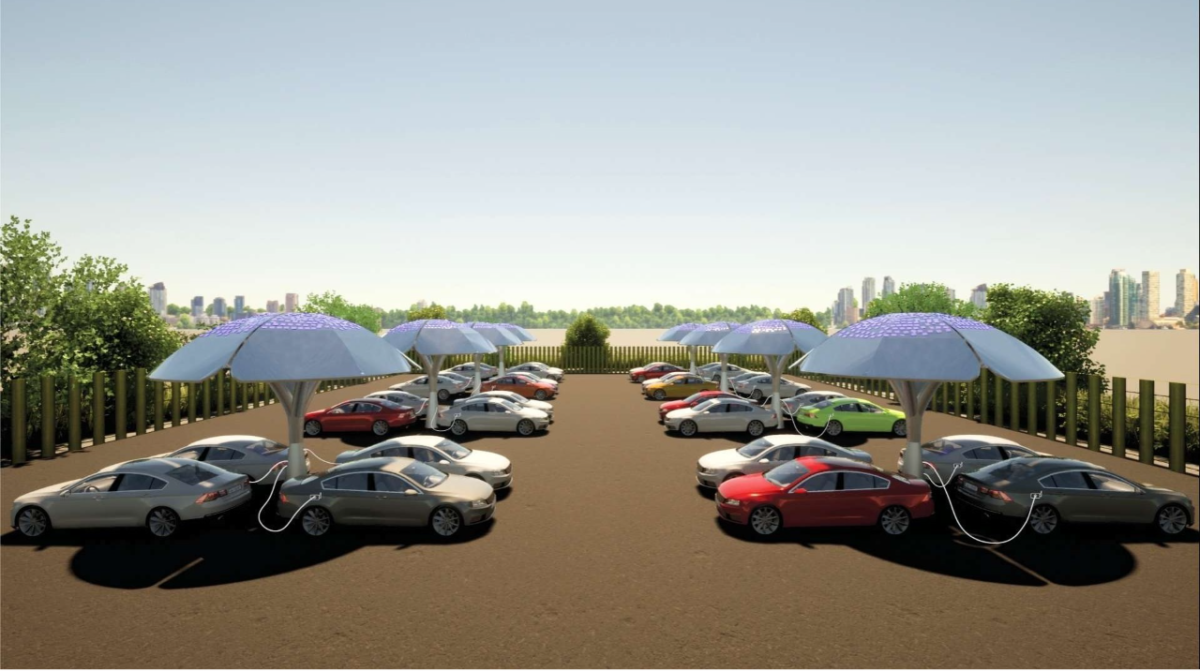UK startup SolarBotanic Trees has designed a photovoltaic tree for applications in commercial and industrial buildings.
“The tree will be using monocrystalline cells with an efficiency of up to 24% which are encapsulated in a 3D shape to give an aesthetically pleasing design,” the company's chief product officer, Gerard Jansen, told pv magazine. “A series of these 3D-shaped ‘leafs’ together form the canopy which has a total diameter of 5 meters. The first version doesn’t use trackers but the cost-benefit of this is being analyzed for use in the future.”
The system is based on a supporting structure that makes use of a mixture of materials, including carbon fiber, metal and polymers. And according to the manufacturer, it is designed for quick and easy installation, so it can be packed for efficient shipment.
“The production is primarily in the UK and the product will be rolled out gradually capturing the largest global markets in a strategic way considering certification and logistic requirements,” Jansen said. “The target market for the tree is the commercial and industrial sector where the Tree brings aesthetic value to the surrounding real estate.”
Prices range from GBP 12,000 ($14,080) to GBP 16,000. The cost of the versions with energy storage and EV charging capabilities will depend on the energy and power capacity of the integrated hardware.
“This first-generation SolarBotanic Tree will eventually spawn a family of products, primarily aimed at the rapid Electric Vehicle charging market for homes, businesses and commercial car parks, where solar power can be captured and stored for charging points,” the startup said. “It will also encompass a sophisticated AI-driven energy storage and power management system (PMS), where trees can be linked and form part of a local grid, or feed into the main grid, essential to optimize an increasingly electrified future.”
The company plans to start selling the first systems in early 2023. It developed the solar tree technology in partnership with Co-Innovate, an initiative supporting small- and medium-sized enterprises in London by using academic and innovation resources at Brunel University London and the Manufacturing Technology Centre (MTC) in Coventry.
Despite their higher costs compared to conventional PV installations, solar trees might have a strategic advantage, as they occupy less space. According to recent research from South Korea, solar trees can possibly capture carbon and produce energy at the same time.
This content is protected by copyright and may not be reused. If you want to cooperate with us and would like to reuse some of our content, please contact: editors@pv-magazine.com.




1 comment
By submitting this form you agree to pv magazine using your data for the purposes of publishing your comment.
Your personal data will only be disclosed or otherwise transmitted to third parties for the purposes of spam filtering or if this is necessary for technical maintenance of the website. Any other transfer to third parties will not take place unless this is justified on the basis of applicable data protection regulations or if pv magazine is legally obliged to do so.
You may revoke this consent at any time with effect for the future, in which case your personal data will be deleted immediately. Otherwise, your data will be deleted if pv magazine has processed your request or the purpose of data storage is fulfilled.
Further information on data privacy can be found in our Data Protection Policy.